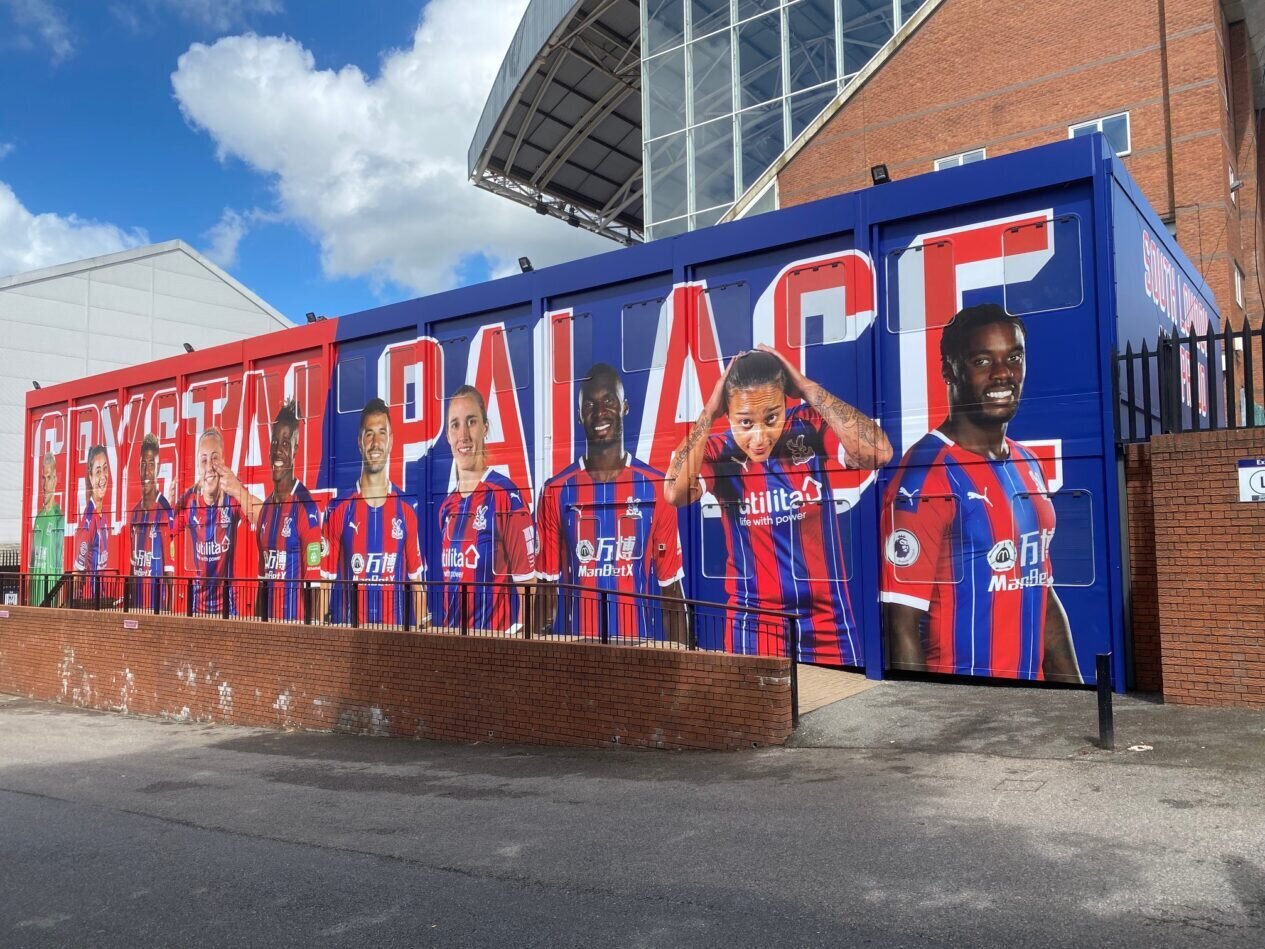
One of the most eye-catching types of application in the market, Rob Fletcher delves into the world of building wraps and analyses the opportunities for growth.
Whether it is a small-scale wrap around the outside of a low-level building, or a gigantic print that adorns the side of a towering skyscraper, building wraps are almost certain to capture the attention of passers-by.
There is no overstating how impressive these prints are; not only do print service providers (PSPs) need to ensure the quality of the print, but also that they can produce a high-quality finish at large scale and that the final piece is able to stand up to the elements, given that it will face constant exposure to all weathers.
Considering the demands of this market and the expertise required, FESPA.com speaks with some of the companies involved in building wraps to find out whether it is a sector worth moving in to and what businesses need to do to ensure success in this area.
Building a legacy
Embrace Building Wraps is one of the leading names in the UK market, working with a wide range of clients. Managing director Greg Forster said business is brisk, with the last two years having been the busiest on record and 2023 looking very promising.
“In the first week in 2023, we saw two major project instructions, while looking at the sales prospect sheet, we have a lot to plan for right through until the end of the year,” Forster said. “However, we never take anything for granted, as elements outside our control can change this position, particularly in the current climate. It is a case of offering fair prices, adding value and eye-watering levels of account management to ensure the projects we pitch for are secured.”
In terms of the type of demand Embrace is witnessing, Forster said the company’s sales mix is almost split down the middle between printed building and scaffold wraps, and printed graphics to perimeter site hoardings. However, the company does receive some more unusual projects such as wrapping sculptures, mobile phone masts and site accommodation cabins.
“We do get issued briefs to wrap all sorts of things; one year we wrapped the inside and outside of a pub in Cheltenham for an online bookmaker,” Forster said.
So, how has Embrace become so successful in this market? First, Forster said much of this is down to its high-level line-up of kit, which includes HP Latex printers – HP R2000 Series and a HP Latex 3600 – for self-adhesive vinyl. In terms of printed scaffold and building wraps, the company will use its Durst 512R Plus, 5m-wide Inkjet printer that prints up to 1200 dpi.
Looking at its wider success, Forster warned that it can take time to establish yourself in the building wrap market, explaining that professionals need to gain experience, as well as have the skill sets in place to install and maintain projects that are effectively giant sails
“Time from initial sales enquiry to project delivery can take months and even years, so do not expect to make a swift return,” Forster said. “Once the project is secured then this is where the account management skills come in to play. You have to manage a lot of people’s expectations in the chain, normally with seven parties, and let us not forget Mother Nature, who tends to have a say in when we can work in the windy winter our sizzling summers.
“Working with the clients we work with also requires our business to obtain and retain a lot of certification and accreditation, which is a full-time job in itself; at the last count we had 30 policy documents Health and safety are paramount in our business, so if we are to keep the public, our clients, and our people safe then its invaluable investment keeping on top of this.”
Embrace Building Wraps has taken on unusual projects such as wrapping sculptures, mobile phone masts and site accommodation cabins.

Offering further advice on the market and what we can expect in 2023, Forster stops short of looking into a crystal ball, but does reiterate how the company’s hard work over the years have helped establish the reliability of its products and services.
“We have worked extremely hard in building up a positive list of prospects now close to converting into live projects,” Forster said. “It feels like clients coming out of their shells and have more confidence. We remain optimistic and while we cannot control inflation, fiscal policy, and international relations, we just have to sadly leave that to government. It is a case of carrying out what we do and do it very well.
“We will continue to lead the market in sustainability offering PVC-free products. Investing in R&D to see what we can do to operationally make projects run more efficiently and keep a close eye on costs and like others accepting our margins will continue to be squeezed. It is a case of persistence pays and adds value to your offering.”
Consistently busy
Having heard the opinion of a business on the front line, what about those supporting and offering solutions to companies in this market. Fujfilm’s printers are used by PSPs around the world to produce building wrap applications, and Shaun Holdom, marketing manager at Fujifilm Wide-Format Inkjet Systems, said this sector can offer a steady flow of work to printers.
“It’s not an exponential growth market, but it’s very steady and consistently busy,” Holdom said. “For developers, it is an excellent way to advertise the properties they’re building or renovating, and it can also act as prime general advertising space. Wraps tend to get changed on long-term construction projects every two to six months – and there are always new projects getting underway.
“At the moment, the biggest demand for building wraps is probably around the regeneration of town and city centres. Building wraps are an excellent way of making sure that things stay looking tidy and presentable – even during extensive building works.”
So, is the building wraps market a suitable area to expand into? Holdom said it should be regarded as a very important market to target if you have a 3m or 5m roll-to-roll machine already installed, but at the same time not a market to enter into without doing your homework.
Spanish company Oedim used a Fujifilm Acuity Ultra to produce a building wrap for the historic Palacio de Cibeles in Madrid.
Picture credit: AP Digitales

“There are a huge number of variables to consider,” Holdom said.” First, local planning regulations vary considerably, and these can restrict the type or size of graphics that can be displayed. Being aware of these and having communications channels with local councils is important.
“The Grenfell Tower tragedy in the UK a few years ago underlined the dangers of flammable cladding on buildings, and this is equally true of building wraps. Building wrap materials have to be certified as fire retardant to keep fire risks to a minimum.
“Advertising agencies are often the managers of the space, and establishing relationships with those agencies is also important, as that’s how you will get the business. In addition, you need to be able to print mesh. These kits are not overly expensive, and they are easy to install, but trying to print mesh without one will lead to a lot of wasted ink and a lot of mess.”
As to how Fujifilm can help, Holdom said the Acuity Ultra R2 roll-to-roll printer, both the 5m and the 3.2m models, are well-suited to building wrap work, saying many customers around the world are using them for that purpose.
One example of this is Oedim, one of Spain’s biggest grand-format print businesses. They now have five of Acuity Ultra printers, with two dedicated to printing mesh exclusively. A few years ago, the company used the Acuity Ultra to produce an incredible building wrap for the historic Palacio de Cibeles in Madrid.
Simply put, there are opportunities for growth in the building wrap sector. However, any company thinking about moving into the market should first consider whether they are fully suited to the sector due to the sheer scale of this work.
Main Image credit: Embrace Building Wraps has provided work for a wide range of clients.